“To make a great film you need three things – the script, the script and the script.” – Alfred Hitchcock
Screenplay is to a film what sheet notes are to classical music. You need the former to do the latter absolute justice. Making a movie is no piece of cake; it requires meticulous preparation, planning, vision and a collaboration of horde of people (as anyone who has sat through end credits in a Marvel movies would know!) And one of the most important, yet often under-appreciated, facets of this process is the screenplay. It is almost impossible to imagine a film without a script, and more importantly, it is almost impossible to imagine a good film having a poor script.
The following isn’t the list of the best screenplays of all time, but rather the greatest screenplays aspiring writers can learn from. Each of the below screenplays provides some valuable insight to an aspiring screenwriter.
1. Citizen Kane – Herman Mankiewicz and Orson Welles (1941)
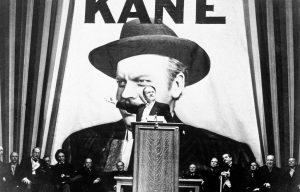
Plot Summary: A newsreel anchor tries to unravel the meaning behind the last word of famous media mogul Charles Foster Kane, which takes us through his life.
Screenwriting Lessons: Perhaps the greatest film of all time is also a masterclass in screenwriting. ‘Citizen Kane’ has a visually descriptive, concise script which helps the director keep the layered story under his grasp. Its treatment of its flawed characters, many of which are said to have drawn inspiration from real people (such as media mogul William Hearst), is a lesson in character study as well as biographical writing.
2. Casablanca – Julius J. & Philip G. Epstein and Howard Koch (1942)
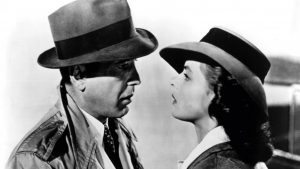
Plot Summary: In 1940s Casablanca, an American expatriate Rick encounters his former love leading to an onslaught of buried emotions.
Screenwriting Lessons: ‘Casablanca’ is one of the most celebrated romances of all time, and for a good reason. The movie boasts of well-defined, intelligent, self-aware characters whose conversations arouse genuine interest. On reading the script, one can clearly note that the focus of the screenwriters was to provide each character, however minor, with a world view and an angle, and flaws brought on by action, not exposition. The dialogue is another ace in the hole, as the continuous sparring and occasional sarcasm keep the film’s momentum aloft.
3. North By Northwest – Ernest Lehman (1959)

Plot Summary: An advertising executive being chased by foreign spies, who mistake him for a government agent, struggles for survival.
Screenwriting Lessons: This Hitchcock thriller featuring a case of mistaken identity and a 2000-mile chase across America, is a gold mine of lessons for anyone, even a professional, writing a screenplay for a thriller from the master of thrillers himself, as he was heavily involved in Lehman’s writing process. The 179-page draft (!) contains arduous scene descriptions, and is essentially a storyboard in screenplay form. Lehman said in an interview “Hitch says it’s a bore for him to get the picture on the screen, because it has all been done already in his office”. It doesn’t get better than that.
4. 2001: A Space Odyssey – Stanley Kubrick and Arthur C. Clarke (1969)

Plot Summary: A monolith is found by apes in the distant past, which nudges their evolution. Eons later, three astronauts and a sentient computer named HAL 9000 set off on a quest to uncover the mystery behind another monolith found on the lunar surface.
Screenwriting Lessons: Stanley Kubrick‘s magnum opus (or more correctly, one of his magnum opi!) evokes the subconscious more than the conscious. It is mostly a non-verbal experience, and Kubrick’s rendition of the same on paper is nothing like a standard script. The unique play-like approach used by Kubrick is worth a glance simply to provide a deeper insight into the meditative film. Also, Kubrick, being a constant improviser, made several changes in the movie from what the script states, which makes it an interesting read for any cinephile.
5. The Godfather – Mario Puzo and Francis Ford Coppola (1972)
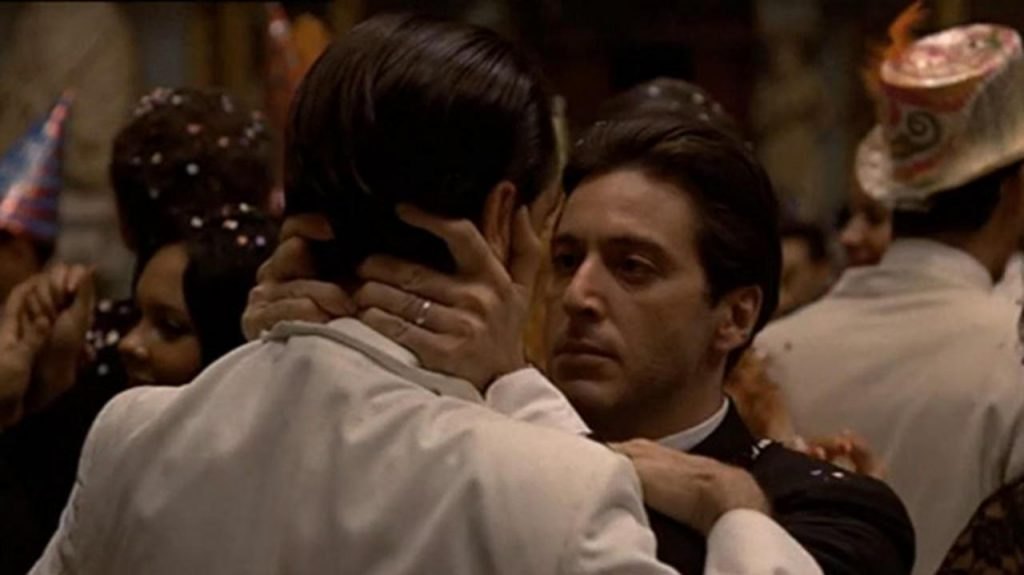
Plot Summary: Vito Corleone, the ageing kingpin of a mafia family decides to bequeath his empire to his son, who is reluctant, but a string of events starts an all-out war between the five prominent mafia clans.
Screenwriting Lessons: While the second installment of ‘The Godfather’ trilogy is usually considered its finest, the screenplay of the first film is a richer learning resource, simply for the fact that it eloquently lays the foundation of Michael Corleone, cinema’s most tragic hero. Mario Puzo, from whose novels the film was adapted, succeeds in providing unfathomable depth to the character of a reluctant protagonist who stands up when the time arrives. The screenplay also sheds light on how one can use conflict, mystery and tension to keep an audience hooked a relatively slow story. An expressive effort by both the veteran author and the revered director.
6. Chinatown – Robert Towne (1974)

Plot Summary: A private detective hired to expose an adulterer finds himself caught up in a web of deceit, corruption, and murder beyond his control.
Screenwriting Lessons: This is one film whose screenplay is as notorious as the film itself. Considered a screenwriting masterpiece, this noir film’s screenplay fits all of its enigmatic characters, dense subplots and overarching symbolism in an immaculately concise script. Brevity doesn’t compromise on quality one bit, as the way the classic film turned out shows. The screenplay doesn’t have a single lulling moment and keeps the reader in the dark regarding its central mystery till the very end. A taut, no-nonsense screenplay.
7. Jaws – Peter Benchley and Carl Gottileb (1975)
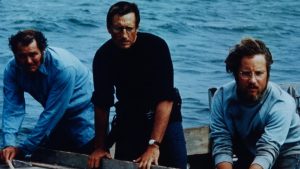
Plot Summary: A great white shark arrives on the shores of a New England beach resort and wreaks havoc with bloody attacks on swimmers, until sheriff Martin Brody teams up with a marine biologist and an old seafarer to hunt the monster down.
Screenwriting Lessons: The screenplay for the first ever summer ‘blockbuster’ holds many a lesson for those wishing to write fares which awe, entertain and earn the big bucks. While young Spielberg‘s direction deserves big props, the script provides all the ingredients for a surefire hit – the element of urgency, element of constant uncertainty to keep the viewer on edge and a memorable supporting character who tells a memorable backstory (Quint). ‘Jaws’ is blockbuster 101.
8. Taxi Driver – Paul Schrader (1976)
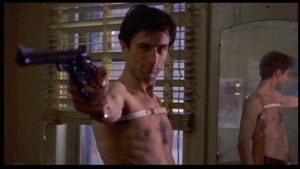
Plot Summary: An insomniac war veteran drives a taxi through NYC at night. He becomes unstable when he see that the city has deteriorated into a cesspool, and sets out to clean the city using questionable methods.
Screenwriting Lessons: Martin Scorsese‘s genius in uncovering the dirty underbelly of a decadent NYC has garnered a lot of praise, but equally impressive is Paul Schrader’s screenplay, which lays massive emphasis on the character study which Scorsese-De Niro bring to life. The unmistakable grey shades in Travis’ well-meaning, if maniacal, vigilante’s morality, the strong narrative tools, the memorable monologue – all of this shines clear in the text Schrader pens. The best benchmark for a character-driven drama.
9. Annie Hall – Woody Allen and Marshall Brickman (1976)
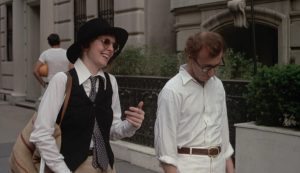
Plot Summary: The story of neurotic comedian Alvy Singer, who meets the ditzy Annie Hall in New York, falls in love with her and then falls out of it.
Screenwriting Lessons: Voted ‘The Funniest Screenplay Ever Written’ by the Writer’s Guild Of America, the greatest film of arguably the greatest screenwriter ever is like a magician’s bag of tricks – every moment a pleasantly surprising and innovative quirk shows itself. The film is a look into Alvy’s ever-morphing state of mind, and its bitingly acerbic screenplay does it complete justice. The film’s script also contains some of the most quoted lines about love and relationships in modern cinema.
10. Apocalypse Now – John Milius and Francis Ford Coppola
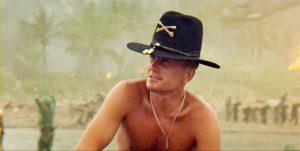
Plot Summary: In the backdrop of the Vietnam war, Capt. Willard is sent to Cambodia to assassinate Col. Kurtz, who has gone rogue. His experiences in the journey transform his life.
Screenwriting Lessons: Coppola‘s insanely descriptive screenplay for ‘Apocalypse Now’ would do well if sold as a novel. The grand scale of its final product on-screen emanates from the script itself. Right from the first line, which goes “Coconut trees being VIEWED through the veil of time or a dream. Occasionally colored smoke wafts through the FRAME, yellow and then violet. MUSIC begins quietly. Perhaps “The End” by the Doors” every frame has been described with auteuristic magniloquence. The script is a lesson on writing large-scale, high-value, uptempo, memorable epics.
Read More: Best Movie Remakes of All Time
11. Blue Velvet – David Lynch (1986)
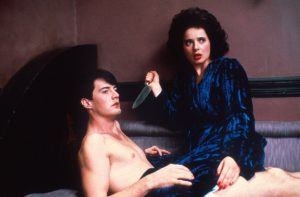
Plot Summary: The discovery of a severed human ear found in a field leads Jeffrey on an investigation related to a beautiful, mysterious nightclub singer named Dorothy and a group of criminals who have kidnapped her child.
Screenwriting Lessons: David Lynch‘s peerless surrealist themes necessitate a reading of his scripts by any wannabe screenwriter wishing to create something eccentrically out-of-the-box. The film features one of the most sinister characters ever created in the psychological-horror genre in Frank Booth. The disturbing elements are incredibly effective due to the subtleties put into the character development: Lynch shows an especially strong knack for exploiting a character’s inner frailties. While Lynch’s ‘Mulholland Drive’ is also a must-read, ‘Blue Velvet’ film edges it out to get here because it has more lessons in Lynchism to offer.
Read More: Best Sci-Fi Movie Directors of All Time
12. Unforgiven – David Webb Peoples (1992)
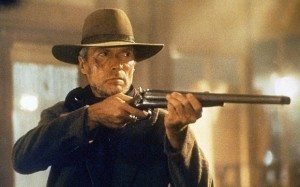
Plot Summary: Former gunman William Munny sets off to make one last kill, aided by an old partner and a young man.
Screenwriting Lessons: ‘Unforgiven’ is an elegy to the dying genre of wandering gunslingers and wild violence. It is a sublime example of a film which makes us root for the ‘bad guy’ who has a good cause. Peoples strays away from classic Western conventions, filling the film to the brim with well-written grey characters. Peoples deconstructs the life in the wild west and the difference between man and myth through three characters – the former gunman wishing to escape his past, the young ‘Schofield Kid’ looking forward to the violence in life and a novelist. The most emotionally aware western there ever was.
Read More: Best Movie Cinematography of All Time
13. Groundhog Day – Danny Rubin and Harold Ramis (1993)
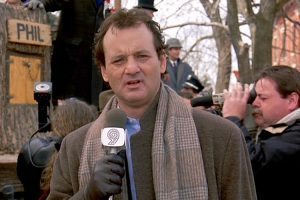
Plot Summary: A weatherman gets stuck in a time loop and has to relive groundhog day over and over.
Screenwriting Lessons: The concept of ‘Groundhog Day’ is brilliant on its own. A man reliving one day over and over is as intriguing as subjects go. Danny Rubin wrote this screenplay in less than a week. And as he explains in his book “How to Write Groundhog Day”, he never wallowed in too many tedious details, concentrating instead on the organic development of his main guy, genuine, relatable wit and the philosophical undertones, thus creating a contemplative comedy.
Read More: Best Hollywood Directors of All Time
14. Pulp Fiction – Quentin Tarantino (1994)
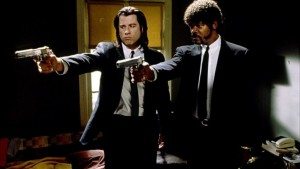
Plot Summary: The lives of two mob hit men, a boxer, a gangster’s wife, and a pair of diner bandits intertwine in four tales of violence and redemption.
Screenwriting Lessons: ‘Pulp Fiction’ is a unique film in many ways – its fragmented, non-linear narrative, emphasis on loitering dialogue and stylistic visual exposition and slick, eloquent and memorable characters have made it a cult sensation. The way Quentin Tarantino intertwines four stories with an overarching common thread which binds the suspense is truly remarkable. Also remarkable is how the dialogue between mob hitmen Vincent and Jules, although seeming like rambling, serves a clear purpose – to create empathy in the viewer’s mind for them. And he succeeds big time. Tarantino has crafted some of modern cinema’s most memorable characters, and this is him at his peak.
Read More: Best Movie Chases of All Time
15. Fargo – Joel And Ethan Coen (1996)

Plot Summary: Jerry is in a financial fix and as a last resort, hatches a plan to get his wife kidnapped and ask for ransom from her wealthy father, who has no regard for him. But it all goes wrong and this ruse turns into a bloody affair, putting the a pregnant but determined sheriff on his tail.
Screenwriting Lessons: From on cult sensation to the next. The Coen brothers have a peculiar, yet definitive style of creating magnetic characters who are seared into your brain. In ‘Fargo’, they pair it up with an darkly comic, insane plot, which seems to be wandering at times, but on closer inspection, is as meticulous as a renaissance painting. Each scene, however trivial, is the part of the bigger picture in ‘Fargo’. Another distinguishing feature of ‘Fargo’ is how unlike other procedural cop films, the story revolves around the criminal and the cop comes into the picture much later. I’d actually suggest reading every single Coen script, and this is the best script to start.
Read More: Best Movie Monologues of All Time
16. American Beauty – Alan Ball

Plot Summary: Lester Burnham, a disillusioned suburban resident in the midst of a mid-life crisis, becomes infatuated with his daughter’s best friend , which changes his outlook towards life.
Screenwriting Lessons: The most recognisable aspect of ‘American Beauty’ were its visual motifs. The overarching symbolism evoked by rose petals (and the colour red) elevates the film to another sapient level; so does the singular inclusion of a plastic bag floating in the wind (in front of, you guessed it, a red wall). It is enlightening to see such leitmotifs represented on the script. The plot of the film appears to be quite plain, but the symbolism and the the emotional responses of the characters makes the film reach a deeper intimacy. The screenplay, much like the tagline of the film, reveals much more if we ‘look closer’.
Read More: Best Movie Musicals of All Time
17. Memento – Christopher Nolan (2000)
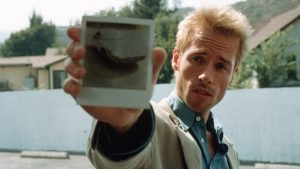
Plot Summary: The film follows two stories in the life of Leonard, an ex-insurance agent incapable of creating new memories, who uses tattoos and notes to track down the murderer of his wife. One story goes chronologically while the other goes in reverse, culminating at a single point.
Screenwriting Lessons: ‘Memento’ might have been a run-of-the-mill story had it been told in a single go, chronologically. But by tweaking the timeline, Christopher Nolan crafts a screenplay, which, like the film, grabs the viewer from start to end. It also makes it clear that jumbling timelines shouldn’t be a “cool” choice; it should be a necessity. The reason ‘Memento’ is skewed is because we’re trying to grasp what Leonard feels like, only remembering things in sequence for a short while, underlining the film’s theme. Also, what the Nolans did was use regular typeface for the reverse chronological sequences and italics to signify forward chronological sequences. Irregular choice, but a damn helpful one, teaching us that screenwriting isn’t a science following set rules, it is art.
Read More: Best Women Directed Movies of All Time
18. Eternal Sunshine Of The Spotless Mind – Charlie Kaufman (2004)

Plot Summary: When Joel Barrish learns that his girlfriend Clementine underwent a surgery to erase him from her memory, he decides to do the same, but realisation of his love for her hits him as her memories begin to fade away. Will he be able to salvage whatever he remembers of her?
Screenwriting Lessons: Charlie Kaufman is one of the most incredibly original screenwriters out there, as he has shown time and again. In ‘Eternal Sunshine of the Spotless Mind’ too, he lends his characters an emotional intimacy eclipsing any contemporary romance. This film is the go-to inspiration for writing fleshed out, vulnerable, yet endearing characters. Also inspiring is the remarkable way in which the inside of of Joel’s mind is explored in a sort-of lucid dream. The film has quite a few sci-fi elements, but never lets the jargon downplay its poignancy, a trait which many current film seem to lack.
Read More: Best Movie Quotes of All Time
19. The Social Network – Aaron Sorkin (2010)

Plot Summary: Harvard student Mark Zuckerberg creates the social networking site that would become known as Facebook, but is later sued by two brothers who claimed he stole their idea, and the co-founder who was later squeezed out of the business.
Screenwriting Lessons: Aaron Sorkin has created his own hallmark style of screenwriting, with long tracking shots and build-up through snappy dialogue, and this film get grade-A Sorkin. He uses two depositions to create a bridge between interluding past and present narrative of the life of Mark Zuckerberg. The script does a masterful job with these jumps using lines of dialogue, pre-laps, audio and visual clues to serve as touch points for each transition. The contemporary, witty lines, especially the quips made by Jesse Eisenberg‘s Zuck, are prime examples of engaging dialogue.
Read More: Biggest Box-Office Hits of All Time
20. Birdman – Alejandro G. Iñárritu, Nicolás Giacobone, Alexander Dinelaris Jr., Armando Bo (2014)

Plot Summary: Riggan Thomas, who was notorious 20 years ago for playing ‘Birdman’, tries to revive his failing career and credibility as an actor by producing and starring in a Broadway play.
Screenwriting Lessons: ‘Birdman’ is lauded for its stellar performances, Lubezki’s magical lenswork, for its daring experimentation. This seems to overshadow the brilliance of its Oscar-winning screenplay, which is as educational and awe-inspiring as the film it spawned. The three co-screenwriters talked about how the ‘simulated single shot’ approach shaped their writing process, stating that they had to keep every moment ‘choreographed’ so as to create a seamless experience. This was made tougher by the fact that the film contained frequent interludes between Riggan’s imagination and reality (such as the time his manager sees him throwing things which Riggan thinks he’s breaking using telekinesis). The deft handling of the thematic approach of the film is the screenplay’s biggest win.
Read More: Best Screenwriters of All Time


You must be logged in to post a comment.